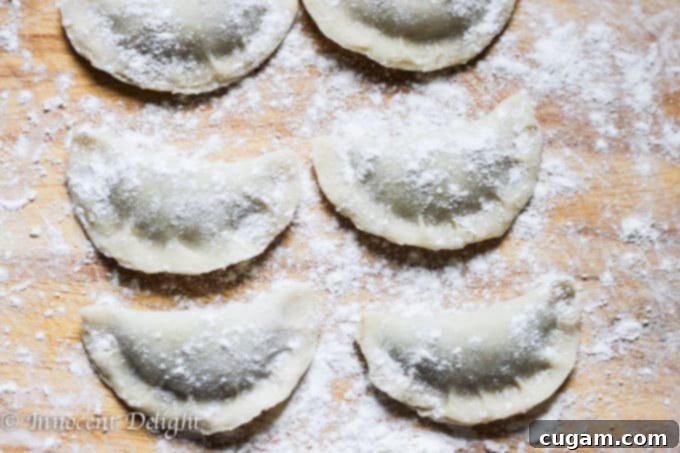Mastering Homemade Sauerkraut and Mushroom Pierogi: Your Guide to Traditional Polish Christmas Eve Delights
There are certain flavors that instantly transport us back to cherished memories, and for many, especially those with Polish heritage, Sauerkraut and Mushroom Pierogi evoke the warm, cozy glow of Christmas Eves past. Imagine a home filled with the aroma of these delicate dumplings, surrounded by family, laughter, and the excitement of holiday traditions. This recipe isn’t just about making food; it’s about recreating a piece of that magical holiday spirit from scratch, bringing an authentic taste of Poland to your table.
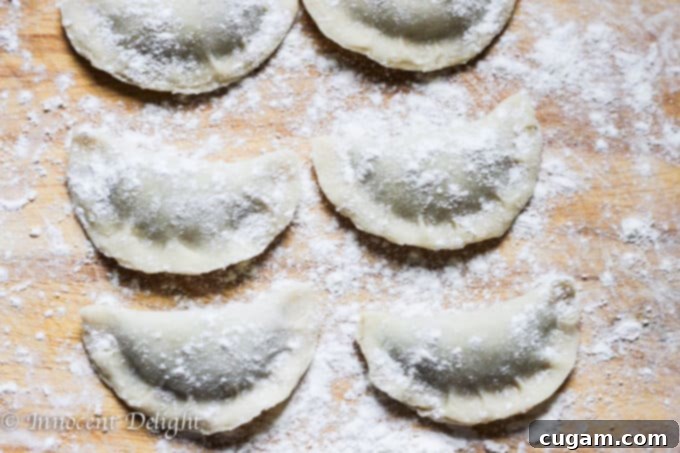
In Poland, Christmas Eve – known as Wigilia – is a deeply significant celebration, marked by a meatless feast of twelve traditional dishes. Among these, Sauerkraut and Mushroom Pierogi hold a truly special place. While countless variations of pierogi exist, from sweet fruit fillings to savory potato and cheese, it’s rare to find a Polish Christmas Eve table without these particular dumplings. They are a staple, a non-negotiable part of the festive spread, cherished for their hearty, umami-rich filling and comforting texture.
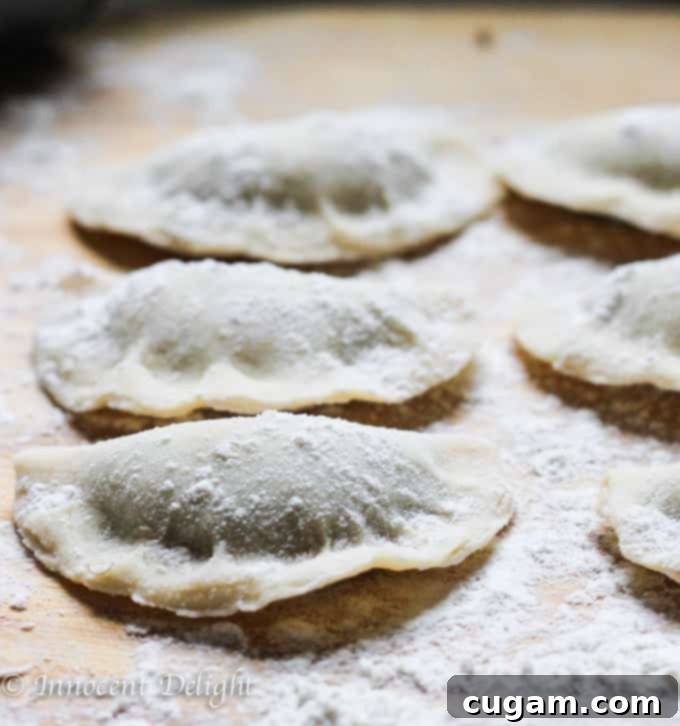
The beauty of making pierogi from scratch lies in the ability to infuse them with personal touch and ensure every ingredient is of the highest quality. For many, pierogi preparation is a joyful pre-Christmas ritual. I often find myself making large batches of these traditional Sauerkraut and Mushroom Pierogi a few weeks before the holiday rush, then freezing them to simplify Christmas Eve cooking. However, this past year, with just my husband and me to cook for, I enjoyed the more relaxed pace of preparing our pierogi fresh on Christmas Eve morning. It’s a truly rewarding experience to craft these culinary delights, knowing the effort translates into unparalleled flavor.
While our little one, bless his heart, currently prefers his pizza (a culinary choice many parents can relate to!), this traditional dish remains a highlight for the adults. The process might seem daunting at first, but with a clear guide, you’ll discover the immense satisfaction of creating these Polish dumplings from basic ingredients. In a previous post, I delved into other traditional Polish Christmas foods and offered tips for perfect pierogi dough. This time, our focus is entirely on the authentic experience of making Sauerkraut and Mushrooms Pierogi from scratch, ensuring every bite is packed with traditional flavor and comfort.
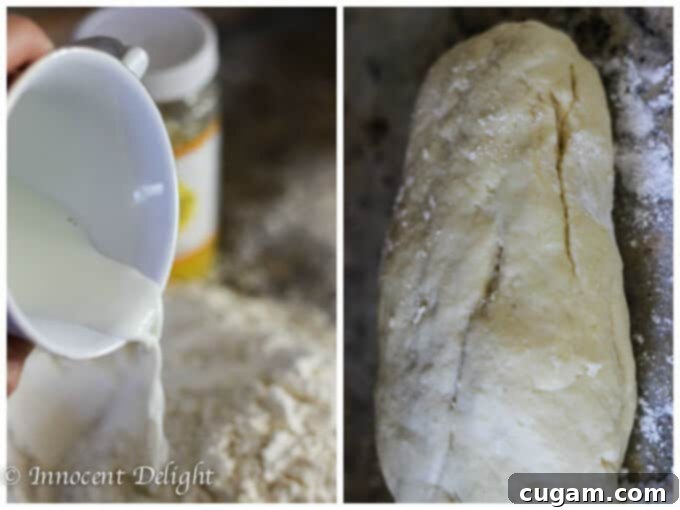
Crafting the Perfect Pierogi Dough from Scratch
The foundation of any great pierogi is a tender, pliable dough. Fortunately, the dough for Sauerkraut and Mushroom Pierogi is remarkably simple, requiring just a few common ingredients: all-purpose flour, warm milk, warm water, and a touch of melted butter, along with a pinch of kosher salt for flavor. The key to success lies in the mixing and resting process. Combine your flour and salt, then gradually incorporate the warm milk and melted butter. Add warm water slowly, as flour absorption varies, and knead the mixture until a smooth, elastic ball forms. This process usually takes about 10-15 minutes by hand. Once your dough is ready, cover it with a large bowl and allow it to rest for approximately 20-30 minutes. This resting period is crucial; it allows the gluten to relax, making the dough much easier to roll out thinly without shrinking back.
When you’re ready to start assembling, work with the dough in small batches – typically a quarter of the total dough at a time. This prevents the remaining dough from drying out, which is vital for achieving that perfect, sealable consistency. Keep the unused portions covered with plastic wrap. Roll each batch of dough until it’s thin, almost like pasta sheets. Then, using a cookie cutter or the rim of a wide glass, cut out uniform circular pieces. These circles will be the shells for your delicious filling, ready to be transformed into classic Polish pierogi.
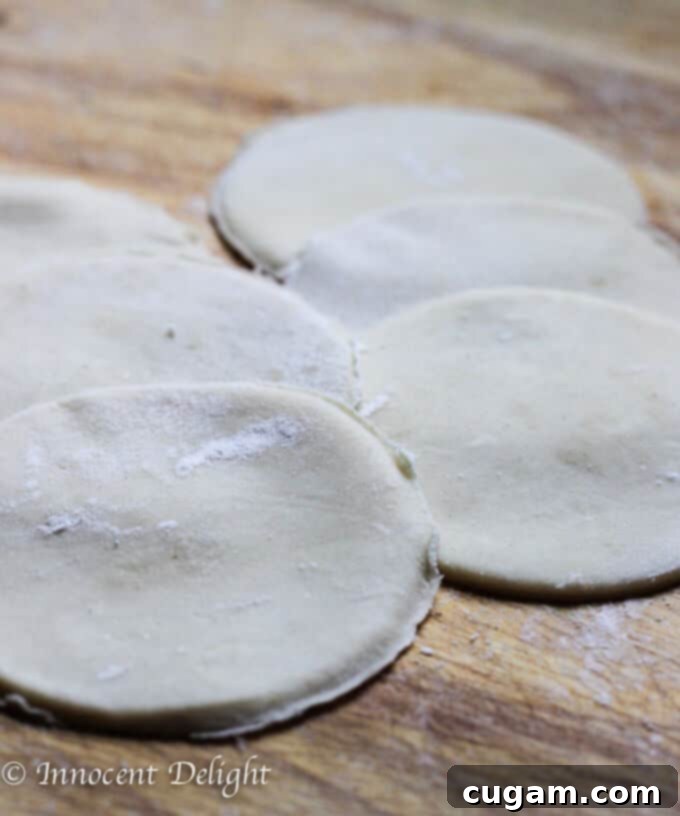
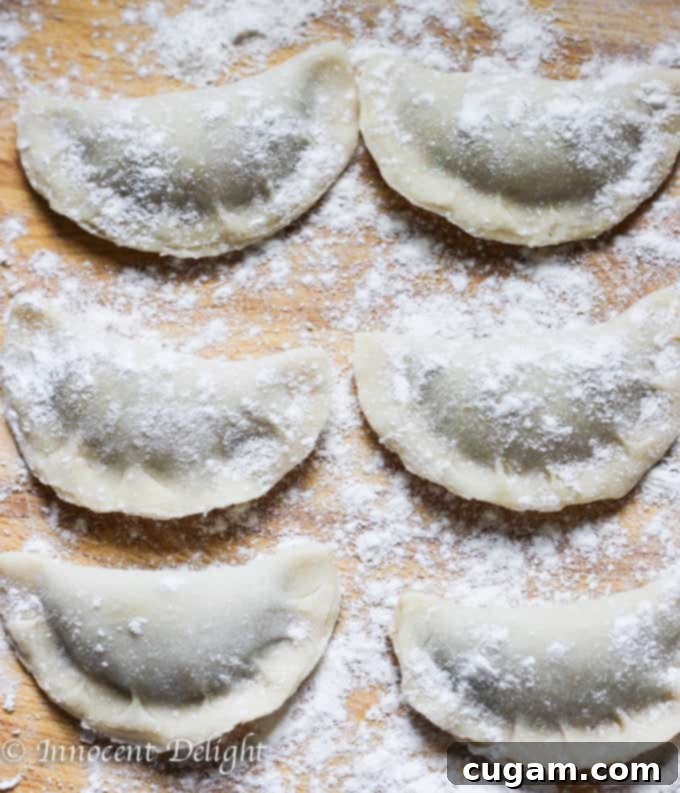
Preparing the Rich Sauerkraut and Mushroom Filling
While the dough is straightforward, the filling for these traditional pierogi demands a little more attention and preparation, but the depth of flavor it yields is well worth the effort. This savory concoction is what truly defines the Christmas Eve pierogi experience.
Step-by-Step Filling Preparation:
- Dried Mushrooms: If you’re using dried porcini mushrooms – and I highly recommend them for their intense flavor – begin by soaking them. Place the dried mushrooms in a pot and cover them with water. Ideally, let them soak for several hours or even overnight. This rehydrates them and also creates a flavorful liquid that you’ll use later. After soaking, boil the mushrooms in the same water for approximately an hour until they are tender. Once cooked, remove them with a slotted spoon, rinse them thoroughly under running water to ensure they are clean, and chop them. Make sure to reserve that precious mushroom soaking and cooking water!
- Sauerkraut Preparation: Next, address the sauerkraut. It’s crucial to rinse it well under cold water. This step helps to reduce its strong acidity, balancing the flavors in the final filling. After rinsing, place the sauerkraut in a separate pot, cover it with fresh water, and boil it until it becomes soft. This can also take around an hour. Many find it convenient to do this step the day before, especially if planning a large pierogi-making session.
- Fresh Mushrooms and Onions: While the dried mushrooms and sauerkraut are cooking, you can prepare the fresh components. In a pan, sauté finely chopped onions in your preferred oil until they are soft and translucent, which typically takes about 5 minutes. Then, add sliced fresh mushrooms (baby bella or cremini work wonderfully) to the pan with the onions and continue to cook until the mushrooms are tender and have released their moisture, usually about 15 minutes.
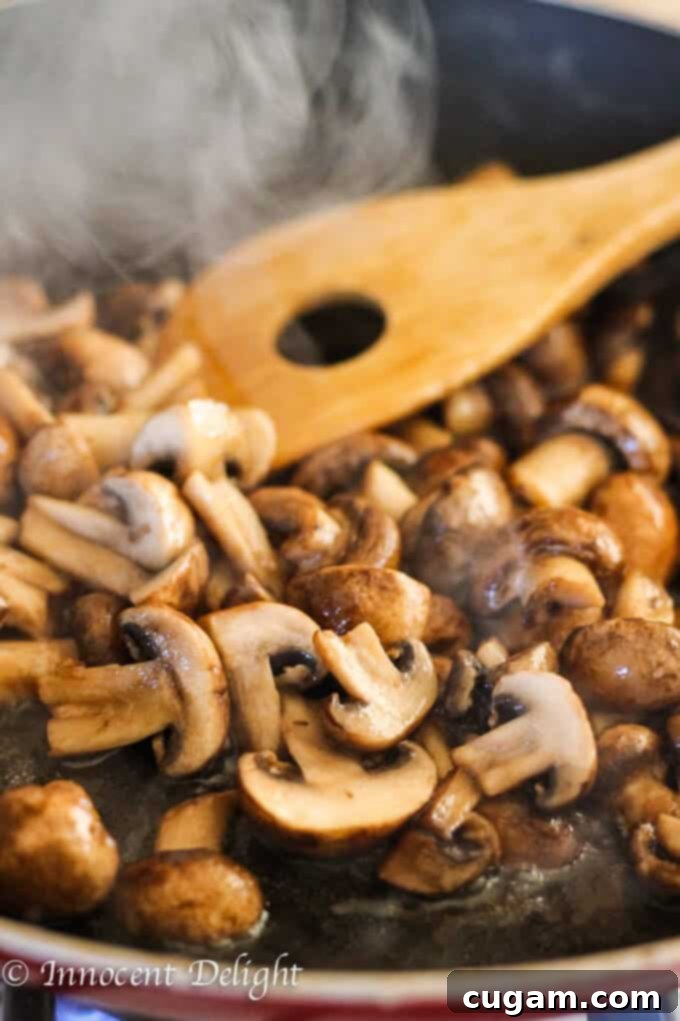
Once all your individual components for the filling—the rehydrated and cooked dried mushrooms, the softened sauerkraut, and the sautéed fresh mushrooms and onions—are ready, it’s time to bring them together. Transfer these ingredients into a food processor. Pulse them carefully until they are finely chopped, but be mindful not to overdo it. The goal is to achieve a finely minced mixture that still retains a recognizable texture of sauerkraut and mushrooms, rather than a completely smooth paste. This slight texture is part of the authentic experience.
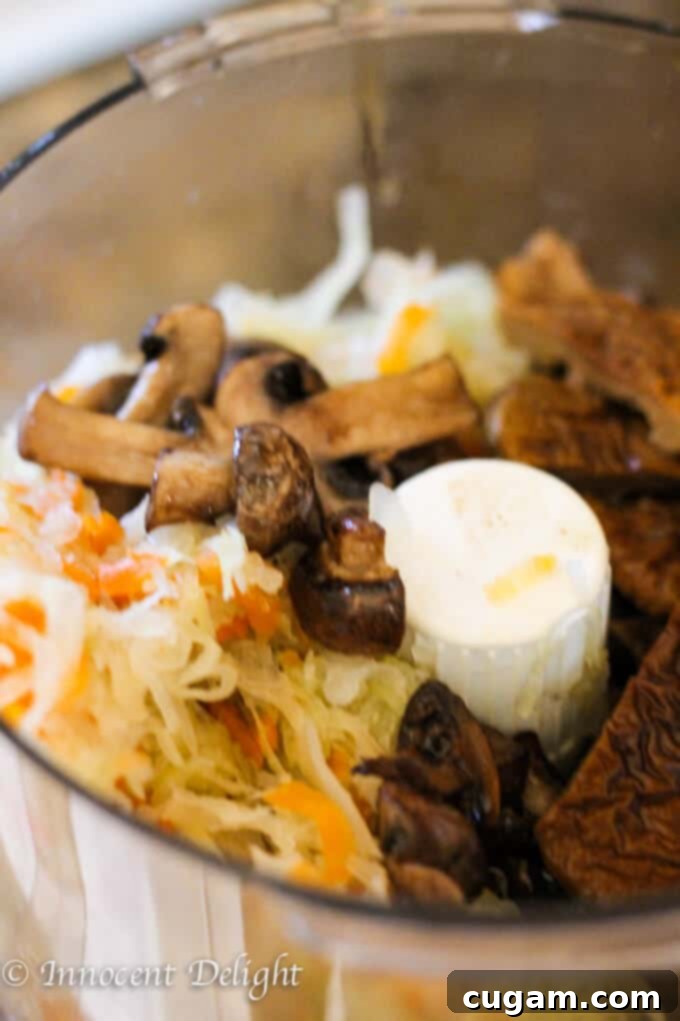
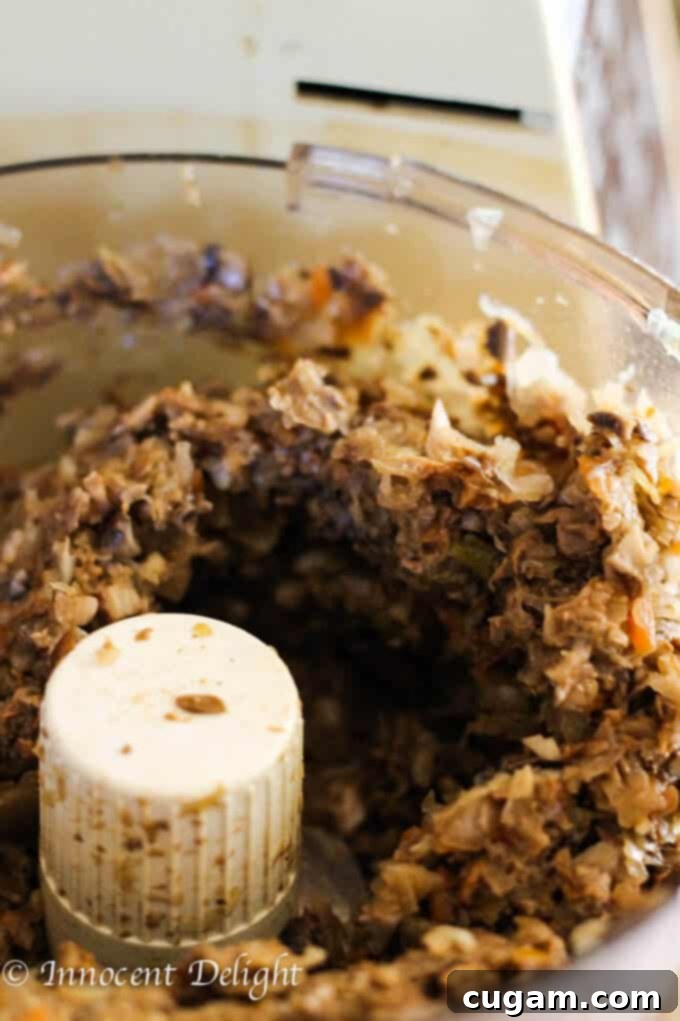
After processing, transfer the filling back to a pan. Here’s where that reserved mushroom water comes in handy: using a strainer, add about 1/4 to 1/2 cup of the dried mushroom water to the filling. Cook for a few minutes, allowing the flavors to meld and the filling to absorb some of that rich liquid. Taste and adjust the seasoning with salt and freshly ground black pepper as needed. Continue cooking for a few more minutes until all the ingredients are well merged and the flavors are harmonious. Finally, let the filling cool completely before you begin assembling your pierogi. A cooled filling is much easier to work with and helps prevent the dough from becoming soggy.
Assembling and Cooking Your Homemade Pierogi
With your dough rested and filling cooled, it’s time for the most enjoyable part: assembling and cooking your pierogi. This is where patience and a little practice pay off, transforming simple ingredients into a delightful meal. As you work, ensure you have a large pot of salted water boiling vigorously. This way, you can drop your freshly formed pierogi in batches directly into the hot water, minimizing downtime and ensuring they cook perfectly.
Take a quarter of your prepared dough, keeping the remaining covered with plastic wrap to prevent it from drying out – a crucial step for maintaining its pliability. Roll this portion of dough as thinly as possible. Using a cookie cutter or a large wine glass, cut out uniform circles. Place about one teaspoon of the delicious Sauerkraut and Mushroom filling in the center of each circle. Lightly moisten one half of the dough circle with a little water, then fold the other half over to create a semi-circle. Carefully press the edges together to seal the pierogi, ensuring there are no gaps. You can crimp the edges with a fork for a decorative touch and extra seal security.
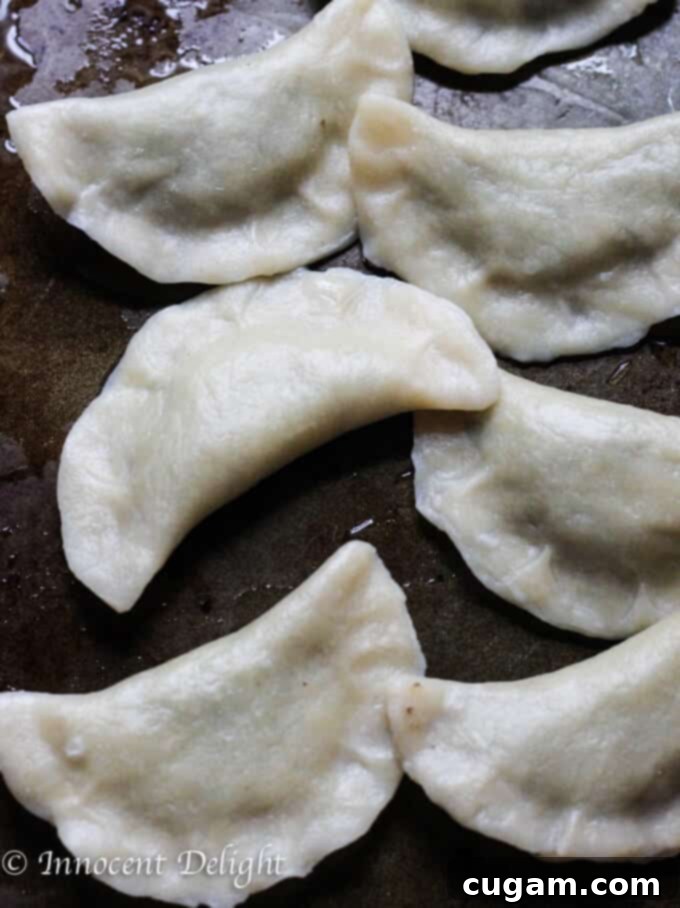
Once your pierogi are formed, gently drop them into the vigorously boiling salted water, usually about 8-10 at a time, depending on the size of your pot. Use a wooden spoon to carefully stir them once they’re in the water, preventing them from sticking to the bottom of the pot. As the pierogi cook, they will eventually rise to the surface. Once they float, allow them to boil for an additional minute to ensure the dough is fully cooked through. Then, using a slotted spoon or spider, carefully remove them from the water and place them on a baking sheet or platter. If you are not serving them immediately, separate them slightly to prevent sticking as they cool. Continue this process until all your dough and filling are used up. If you happen to have any leftover filling, don’t let it go to waste! It makes a fantastic savory addition to French Crepes the next day. The result of your efforts will be truly satisfying. Enjoy your homemade Sauerkraut and Mushrooms Pierogi from Scratch!
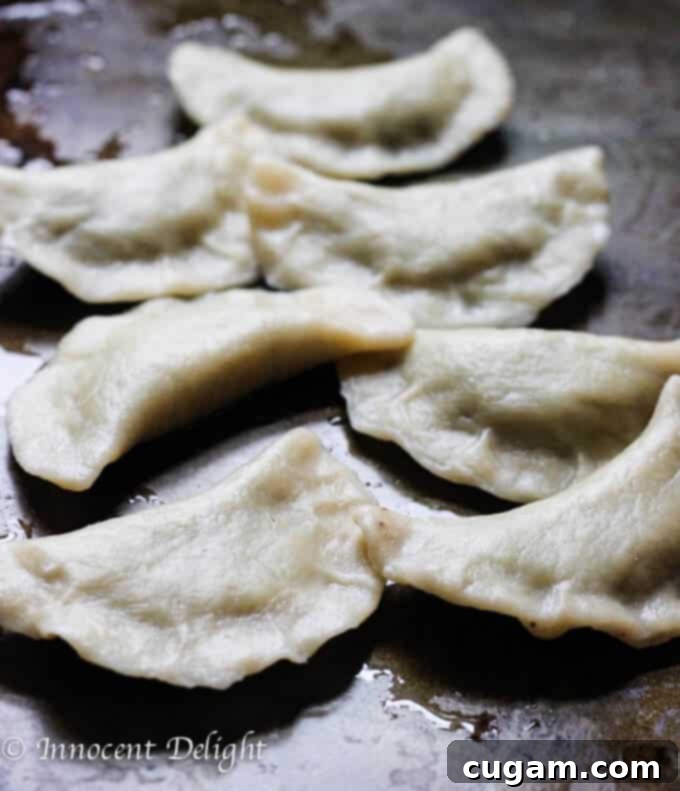
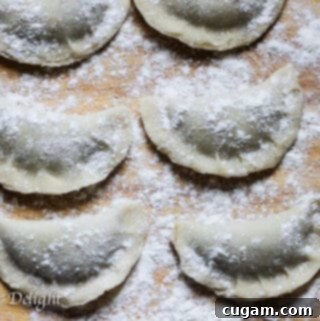
Sauerkraut and Mushrooms Pierogi from Scratch
Print
Pin
Rate
Ingredients
For the dough:
- 3 cups all-purpose flour
- 1/2 cup warm milk
- 1/2 to 3/4 cup of warm water (adjust as needed based on flour absorption)
- 1 tablespoon melted butter
- A pinch of kosher salt
For the filling:
- 1 large onion , finely chopped
- 1 tablespoon of cooking oil (such as vegetable or canola)
- 2 packages of fresh mushrooms (baby bella or cremini), 10 oz. each, thinly sliced
- 1 package of dried porcini mushrooms , 1.5 oz.
- 2 cups of sauerkraut (rinsed and drained)
- Salt and freshly ground black pepper to taste
Instructions
For the dough:
-
On a clean counter or large work surface, pour the flour and make a well in the center.
-
Add a pinch of kosher salt to the flour.
-
Pour the warm milk and melted butter into the well. Gradually begin incorporating the flour from the sides.
-
Slowly add warm water, a little at a time, and knead the dough for 10-15 minutes until it is smooth, elastic, and forms a cohesive ball. The exact amount of water will depend on your flour.
-
Once kneaded, cover the dough ball with a large bowl or plastic wrap and let it rest at room temperature for about 20-30 minutes. This allows the gluten to relax.
-
Divide the dough into four equal portions. Work with one portion at a time, keeping the remaining three covered with plastic wrap to prevent drying.
-
Roll out the dough portion very thinly, aiming for a thickness similar to pasta sheets. Using a cookie cutter or a large wine glass, cut out circular pieces of dough.
-
Place about 1 teaspoon of the cooled filling in the middle of each dough circle.
-
Lightly moisten one half of the circle’s edge with water (using your finger) and then fold the other half over, creating a half-moon shape. Press the edges firmly together to seal, ensuring no gaps. You can crimp with a fork for a decorative and secure seal.
-
Bring a large pot of water to a rolling boil and season generously with salt.
-
Carefully drop about 8-10 pierogi into the boiling water at a time, making sure not to overcrowd the pot. Gently stir with a wooden spoon to prevent them from sticking to the bottom.
-
Once the pierogi float to the surface, let them cook for an additional minute to ensure the dough is fully cooked. Use a spider or slotted spoon to remove them from the water.
-
If not serving immediately, place cooked pierogi on a clean baking sheet or plate, ensuring they are separated to prevent sticking as they cool and dry slightly. For freezing, once cooled, place them on a baking sheet with space between them and freeze until solid. Once frozen, transfer them to a freezer-safe plastic bag or container for long-term storage.
For the filling:
-
Place the dried porcini mushrooms in a pot and cover them with water. Let them soak, preferably overnight, or for at least a few hours, to rehydrate.
-
On the day of making pierogi, cook the rehydrated porcini mushrooms in the same water they soaked in for about an hour, until tender.
-
Meanwhile, rinse the sauerkraut thoroughly under cold running water. Place it in another pot, cover with fresh water, and cook for approximately an hour until it is soft. Drain well.
-
In a separate pan, heat 1 tablespoon of oil. Add the finely chopped onion and sauté until soft and translucent, about 5 minutes.
-
Add the sliced fresh mushrooms to the pan with the onions and cook until they are soft and have released their moisture, about 15 minutes.
-
Once the dried porcini mushrooms are cooked, remove them from their cooking water using a slotted spoon. Reserve the cooking water.
-
Rinse the cooked dried mushrooms well under running water to ensure they are free of any grit. Chop them finely.
-
Combine the cooked sauerkraut, sautéed fresh mushrooms and onions, and the chopped dried mushrooms in a food processor. Pulse until finely chopped but still retaining some texture – avoid making it mushy.
-
Transfer the processed filling back to a pan. Using a strainer, add 1/4 to 1/2 cup of the reserved dried mushroom cooking water to the filling. Cook for a few minutes, allowing the flavors to meld and the liquid to be absorbed.
-
Taste the filling and adjust seasoning with salt and pepper as desired. Cook for a few more minutes until all ingredients are well merged and flavored.
-
Allow the filling to cool completely before using it to assemble the pierogi.
If you’ve enjoyed mastering these traditional Sauerkraut and Mushroom Pierogi, you might also be interested in exploring other classic Polish flavors. Another popular and equally delicious variety is the Authentic Polish Pierogi with Potato and Cheese. This comforting filling is a favorite year-round and offers a different but equally satisfying taste of Polish cuisine. Expand your pierogi-making skills and enjoy the diverse culinary traditions of Poland!

